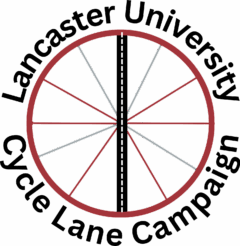As part of our continued efforts to push for a safe, segregated cycle lane along the A6 between Lancaster University and the city centre, campaign member Matt Hanley reached out via email to local politicians and County Council members in January 2025. The goal was to gather political support for the project, raise awareness of the issue, and invite key decision-makers to experience the route for themselves.
Lancashire County Council Responds: What We’ve Learned So Far
After months of public engagement, a petition with over 1,400 signatures, and a formal meeting with the County Council in January, we’ve now received a detailed – but still incomplete – response from Lancashire County Council’s Active Travel Team. Below is a summary of the key points raised by Richard Askew and Chris Hadfield, along with our reflections on what this means for our campaign.
Meeting with Lancashire County Council
On 23rd January 2025, members of the A6 Cycle Lane Campaign — including Lancaster University students, a lecturer, a Dynamo member, and local councillor Gina Dowding — met with representatives from Lancashire County Council’s Active Travel team following months of public pressure and a petition that gathered 1,412 signatures in support of safe, segregated cycle lanes between Lancaster University and the city centre.
The meeting came only after the group challenged an inadequate, unsigned email response from the Council, which failed to address the community’s concerns. With Gina Dowding’s help, a meeting was secured to push for meaningful dialogue. Unfortunately, the meeting ended with no firm commitments from the County Council.
Summary of Lancashire County Council’s Response to the A6 Cycle Lane Petition
Despite securing over 1,400 signatures from members of the public in support of safe, segregated cycling infrastructure along the A6, Lancashire County Council’s response fails to meaningfully engage with the urgency and specificity of our request.
While the Council acknowledges the public support and mentions that it will inform their long-term planning, their reply primarily outlines bureaucratic processes and delays. They cite the existence of over 800 identified zones and 1,000s of schemes within their Local Cycling and Walking Infrastructure Plans (LCWIPs), and explain that these need to go through a lengthy prioritisation process—without giving any timeline or concrete commitment to the A6 scheme we proposed.
